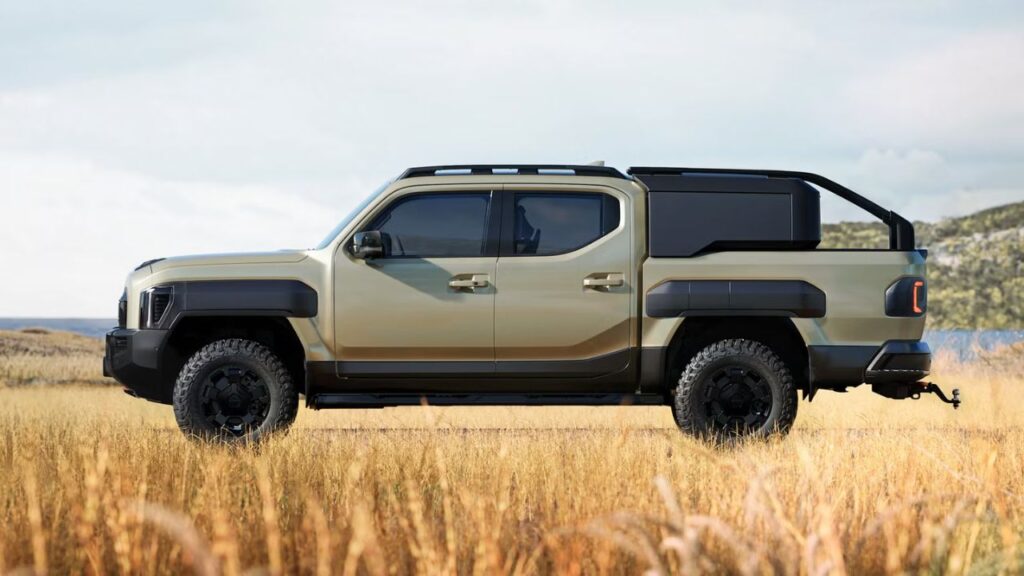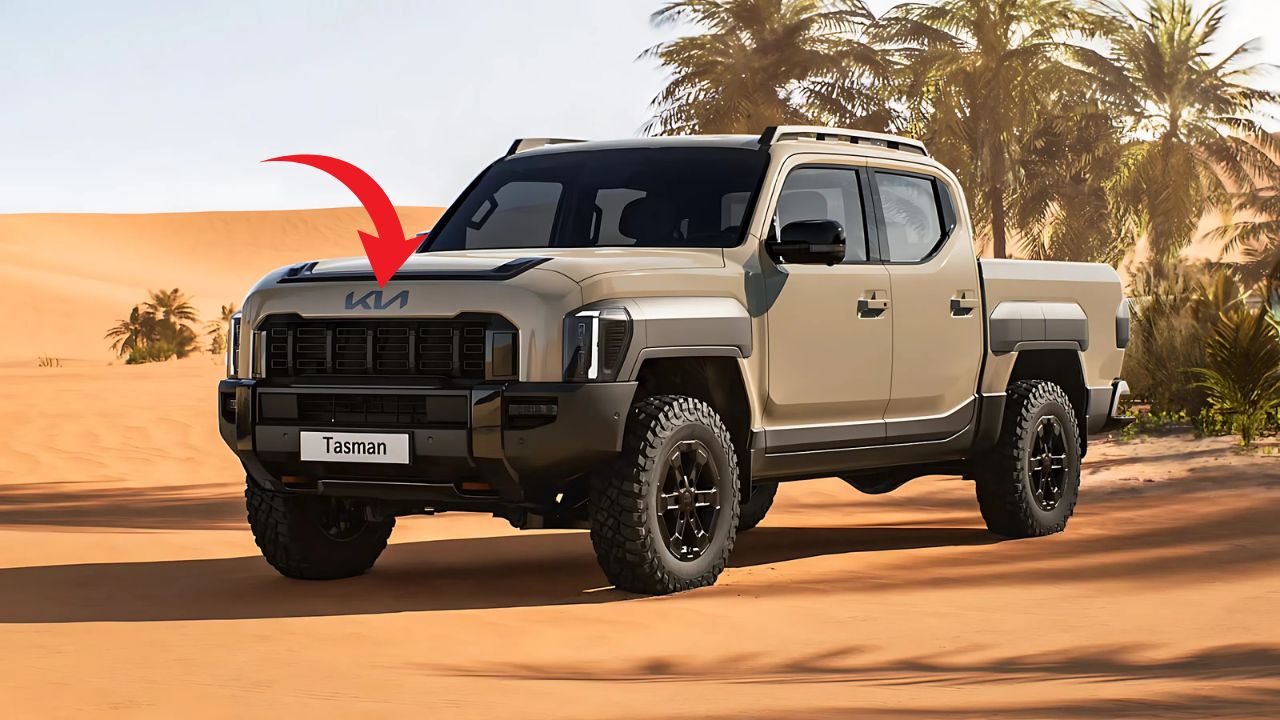The Australian automotive market is experiencing something quite extraordinary in 2025. We’re witnessing the arrival of two vehicles that couldn’t be more different, yet both promise to fundamentally change how Aussies think about their next vehicle purchase. On one hand, we have Kia’s bold entry into the traditional ute territory with the Tasman – a diesel-powered workhorse that’s been specifically developed for Australian conditions. On the other, BYD’s Sealion 7 represents the electric future, challenging Tesla’s dominance with compelling pricing and impressive technology.
These aren’t just new cars hitting the market; they’re statements of intent from manufacturers who understand that Australian buyers demand authenticity, capability, and value for money. Let’s dive deep into what makes each of these vehicles special and why they’re generating so much excitement across the country.

Kia’s First Ute Adventure: The Tasman Phenomenon
When Kia announced they were developing a ute specifically for Australia, many industry watchers raised eyebrows. Could a Korean manufacturer really understand the unique demands of Australian tradespeople, farmers, and weekend adventurers? The answer, it seems, is a resounding yes.
Built for the Harsh Australian Reality
The Kia Tasman isn’t just another global platform adapted for local conditions. This vehicle has been put through its paces in some of Australia’s most demanding environments. From the scorching heat of the Outback to the challenging terrain of Tasmania (hence the name), Kia has invested heavily in ensuring the Tasman can handle whatever Australian conditions throw at it.
Under the bonnet sits a proven 2.2-litre turbocharged diesel engine, producing 154kW of power and a substantial 440Nm of torque. This powerplant, paired with an eight-speed automatic transmission, isn’t trying to reinvent the wheel – it’s about delivering reliable, consistent performance that Australian buyers can trust.
Pricing That Makes Sense
Starting from $42,990 for the base 4×2 model, the Tasman undercuts many established competitors, including the ever-popular Ford Ranger. This aggressive pricing strategy extends across the range, with the top-specification X-Pro variant commanding $74,990. That’s competitive money for a vehicle that promises best-in-class interior space and innovative features like rear seat slide and recline functions – a genuine segment first.
Practical Innovation Where It Matters
The Tasman’s design philosophy centers around practical innovation rather than flashy gimmicks. The integrated 240V power outlet in the tray means tradies can run power tools directly from their vehicle. The rear fender flare storage compartments provide secure, weatherproof storage for valuable items. These touches demonstrate Kia’s commitment to understanding how Australians actually use their utes.
Interior comfort hasn’t been overlooked either. With best-in-segment headroom, shoulder room, and rear legroom, the Tasman promises to be as comfortable on a family camping trip as it is on a construction site. The 75cm combined panoramic display brings modern connectivity features, while the fold-out centre console table can transform the cabin into a mobile office.
BYD’s Electric Ambition: The Sealion 7 Challenge
While Kia focuses on traditional ute values, BYD is betting big on Australia’s electric future with the Sealion 7. This isn’t just another electric SUV hoping to grab a slice of the Tesla Model Y’s success – it’s a comprehensive challenge to the entire premium electric SUV market.
Power and Efficiency in Perfect Balance
The Sealion 7 arrives in Australia with two distinct personalities. The Premium variant delivers 230kW of power and 380Nm of torque from its single rear-mounted motor, achieving a respectable 0-100km/h time of 6.7 seconds. But it’s the Performance variant that really grabs attention, with its dual-motor setup producing an impressive 390kW and 690Nm, slashing the acceleration time to just 4.5 seconds.
Both variants draw power from an 82.5kWh Blade Battery – BYD’s innovative lithium iron phosphate technology that prioritizes safety and longevity. The Premium achieves a WLTP range of 482km, while the Performance manages 456km. These figures place the Sealion 7 firmly in the competitive mainstream, offering real-world practicality for Australian driving conditions.
Technology That Actually Works
BYD has learned from the mistakes of other manufacturers by focusing on technology that enhances rather than complicates the driving experience. The rotating 15.6-inch touchscreen is genuinely useful, adapting its orientation based on whether you’re driving or parked. The head-up display keeps crucial information in your line of sight, while the 12-speaker Dynaudio sound system ensures every journey feels special.
The 360-degree camera system with custom 3D modes takes the guesswork out of parking, while features like vehicle-to-load functionality mean you can power camping equipment or emergency devices directly from the vehicle’s battery. These aren’t just marketing gimmicks – they’re thoughtful additions that solve real-world problems.
Pricing That Disrupts the Market
At $54,990 for the Premium and $63,990 for the Performance, the Sealion 7 significantly undercuts the Tesla Model Y, which starts at $63,400 for the updated RWD version. This pricing strategy puts BYD in direct competition with established players while offering more equipment and features as standard.
The Design Philosophy Divide
These two vehicles represent fundamentally different approaches to automotive design. The Kia Tasman embraces a distinctive, some might say controversial, aesthetic that deliberately breaks from traditional ute styling conventions. Its unique front-end design and chunky proportions make a statement about Kia’s confidence in charting its own course.
The BYD Sealion 7, by contrast, follows a more refined approach inspired by ocean aesthetics. Its flowing lines and coupe-like profile prioritize aerodynamic efficiency while maintaining SUV practicality. The result is a vehicle that looks sophisticated and modern without appearing overly radical.
Interior Philosophies
Inside, both vehicles demonstrate their manufacturers’ understanding of Australian priorities. The Tasman’s cabin emphasizes durability and practicality, with materials and finishes chosen to withstand the demands of work and play. Storage solutions abound, and every control is positioned for intuitive operation.
The Sealion 7’s interior takes a more premium approach, with sustainable materials and sophisticated ambient lighting creating an upscale atmosphere. The emphasis here is on comfort and technology integration, creating a sanctuary from the outside world.
Market Impact and Consumer Choice
Challenging Established Players
Both vehicles arrive at a crucial time for the Australian automotive market. The Tasman directly challenges the Ford Ranger and Toyota HiLux duopoly that has dominated ute sales for years. With Kia targeting 20,000 annual sales (roughly 10% of the total ute market), they’re clearly serious about establishing a significant presence.
The Sealion 7 faces different challenges, entering a rapidly expanding electric SUV segment where brands like XPeng, Deepal, and Leapmotor are all vying for attention. However, BYD’s established presence in Australia, combined with competitive pricing and strong feature sets, positions the Sealion 7 as a serious contender.
The Value Proposition
What both vehicles share is a commitment to delivering exceptional value. The Tasman offers premium features and capability at mainstream pricing, while the Sealion 7 provides Tesla-level technology and performance for significantly less money. This focus on value reflects a broader shift in consumer expectations, where buyers demand more for their investment.
Future Implications
Electrification Timeline
While the Tasman launches with traditional diesel power, Kia has hinted at electrified variants in the future. This suggests a recognition that even traditional vehicle segments will eventually transition to electric power. The Sealion 7, meanwhile, represents BYD’s commitment to accelerating Australia’s electric vehicle adoption through competitive pricing and compelling products.
Manufacturing and Supply Chain

Both vehicles highlight the changing dynamics of automotive manufacturing. The Tasman’s development process, with extensive Australian testing and input, demonstrates how global manufacturers are adapting to local requirements. BYD’s aggressive expansion, meanwhile, showcases how Chinese manufacturers are leveraging scale and innovation to challenge established players.
The Verdict: Choice and Competition
The arrival of the Kia Tasman and BYD Sealion 7 represents everything positive about automotive competition. Consumers benefit from increased choice, better value, and innovative features that might not have existed without competitive pressure.
The Tasman proves that newcomers to established segments can succeed by focusing on genuine customer needs rather than following tired formulas. Its extensive testing in Australian conditions, practical innovations, and competitive pricing demonstrate Kia’s serious commitment to the local market.
The Sealion 7 showcases how electric vehicles can deliver mainstream appeal through the right combination of performance, technology, and pricing. By significantly undercutting Tesla while matching or exceeding features, BYD is forcing the entire industry to reconsider value propositions.
Both vehicles succeed because they understand their target markets intimately. The Tasman speaks to Australians who need genuine capability without compromise, while the Sealion 7 appeals to those ready to embrace electric motoring without paying premium prices.
As these vehicles establish themselves in the Australian market, they’re likely to influence product development across the industry. Established manufacturers will need to respond with their own value-focused innovations, ultimately benefiting all consumers.
The automotive landscape in Australia has never been more exciting, and both the Kia Tasman and BYD Sealion 7 deserve significant credit for raising the bar on what consumers can expect from their next vehicle purchase.
Frequently Asked Questions
Q: When will the Kia Tasman and BYD Sealion 7 be available in Australian dealerships?
The Kia Tasman is scheduled for delivery starting July 2025 for dual-cab pick-up models, with dual-cab chassis variants following in August 2025. The BYD Sealion 7 is available for immediate order and delivery, having launched in February 2025.
Q: How do the towing capacities compare between the Kia Tasman and BYD Sealion 7?
The Kia Tasman offers a braked towing capacity of 3,500kg with a 350kg towball mass rating, making it suitable for boats, caravans, and heavy trailers. The BYD Sealion 7, being an electric SUV, has a lower towing capacity typical of electric vehicles, though BYD hasn’t released specific Australian towing figures yet.
Q: What warranty coverage can buyers expect for these vehicles?
Kia typically offers a 7-year unlimited kilometer warranty on their vehicles in Australia, though specific Tasman warranty details will be confirmed at launch. BYD provides a 6-year/150,000km vehicle warranty and an 8-year/160,000km battery warranty for the Sealion 7, which is competitive in the electric vehicle market.

